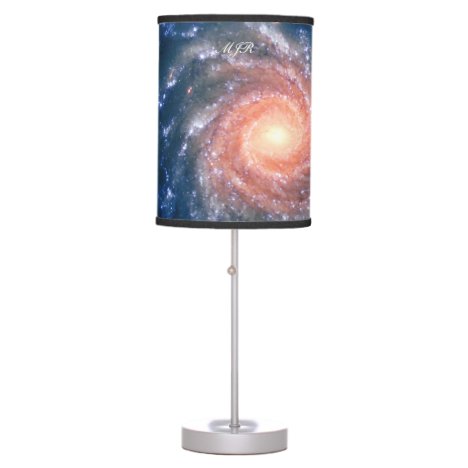There are advances being made almost daily in the disciplines required to make space and its contents accessible. This blog brings together a lot of that info, as it is reported, tracking the small steps into space that will make it just another place we carry out normal human economic, leisure and living activities.
Tuesday, 20 June 2017
Trilobites: Summer Solstice: A Great Moment to Ponder the Sun
The scientific start to summer in the Northern Hemisphere this week comes ahead of a total solar eclipse in August, when the moon will engulf the sun.
via New York Times
Ten near-Earth size planets in habitable zone of their star
NASA's Kepler space telescope team has released a mission catalog of planet candidates that introduces 219 new planet candidates, 10 of which are near-Earth size and orbiting in their star's habitable zone, which is the range of distance from a star where liquid water could pool on the surface of a rocky planet.
via Science Daily
Zazzle Space Exploration market place
Gravitational wave mission selected, planet-hunting mission moves forward
The LISA trio of satellites to detect gravitational waves from space has been selected as the third large-class mission in ESA’s Science programme, while the Plato exoplanet hunter moves into development.
via ESA Space Science
http://www.esa.int/Our_Activities/Space_Science/Gravitational_wave_mission_selected_planet-hunting_mission_moves_forward
Eagle Nebula, M16 - Hubble Astronomy Neck Tie
The Massive Stars in Westerlund 1

Star cluster Westerlund 1 is home to some of the largest and most massive stars known. It is headlined by the star Westerlund 1-26, a red supergiant star so big that if placed in the center of our Solar System, it would extend out past the orbit of Jupiter. Additionally, the young star cluster is home to 3 other red supergiants, 6 yellow hypergiant stars, 24 Wolf-Rayet stars, and several even-more unusual stars that continue to be studied. Westerlund 1 is relatively close-by for a star cluster at a distance of 15,000 light years, giving astronomers a good laboratory to study the development of massive stars. The featured image of Westerlund 1 was taken by the Hubble Space Telescope toward the southern constellation of the Altar (Ara). Although presently classified as a "super" open cluster, Westerlund 1 may evolve into a low mass globular cluster over the next billion years.
Zazzle Space Gifts for young and old
Graphene field effect transistor biosensors
Graphene and other 2D materials are excellent candidates for use in biosensing, due to a multitude of favorable properties. The 2D nature of the materials in itself provides intrinsic advantages, because the entire material volume acts as a sensing surface. Furthermore, graphene provides excellent mechanical strength, biocompatibility, thermal and electrical conductivity, compactness, and potentially low cost.
Two types of biosensors that utilize graphene are emerging as the most promising technologies: surface plasmon resonance (SPR) and graphene field effect transistors (GFET). Although SPR methods have potentially faster readout, the technique is still experimental. GFETs rely on well-established technology of charge carrier density changes in the presence of an analyte. In a broad and intense research spur of recent, GFETs have been used as immunosensors, enzyme, DNA, protein, glucose and bacteria sensors, among other applications.

Image: Scheme of a biosensor (reproduced from Materials Today 14, 308 (2011), creative commons).
GFET is a modification of the classic silicon field-effect transistor, ubiquitous in modern electronics. In traditional transistors, silicon acts as a thin conducting channel, the conductivity of which can be tuned with applied voltage. GFETs perform in a similar manner, except that the silicon is replaced with graphene, which yields a much thinner and hence more sensitive channel region. In sensing mode, channel conductivity is perturbed in the presence of an analyte. Due to the broad electrochemical potential and ability to be functionalized, GFETs present an attractive device for biomolecules to attach to, and because of graphene's ultimate thinness and extreme surface-to-volume ratio, electrical properties are sensitive to even the smallest concentration of attached molecules. Using GFET, biosensors with a detection limit of 10 pg/mL were produced for opioid molecules.
GFETs for biosensing can be reproducibly mass-made with established fabrication technologies. Si/SiO2 wafers that are standard in electronics are used as the substrate. Graphene can be grown with chemical vapor deposition (CVD) and transferred with dry or wet methods. Electrical contacts are deposited by thermal evaporation of metals in a lithographically pre-defined configuration.
The potential of graphene in healthcare is exemplified by the project 2D-Health, funded by the UK agency EPSRC and worth £5.2m over the next five years. Graphene and other 2D materials are set to be used in innovative solutions for specific unmet clinical needs in wound care and management (relevant to diabetes), tissue rehabilitation by electrical stimulation (relevant to dementia), cell therapeutics (relevant to cardiovascular disease), and immunotherapeutics (relevant to cancer). Please fill the quick survey below!
via Graphenea

